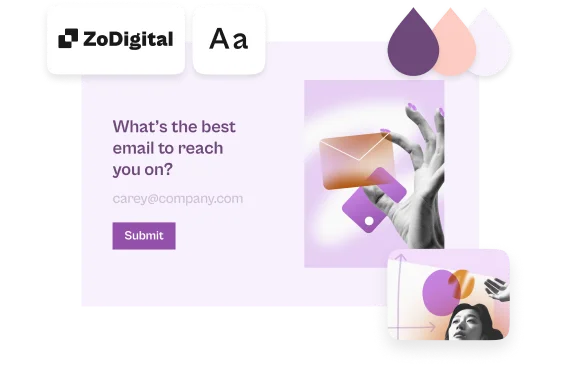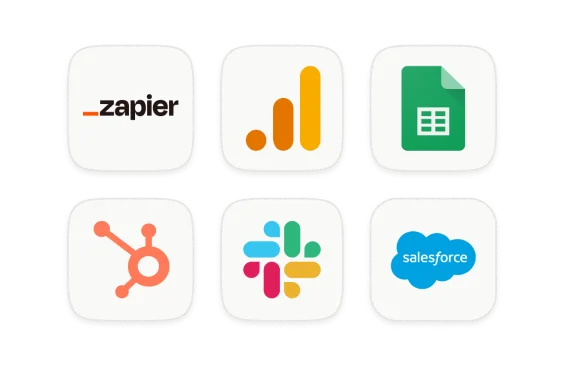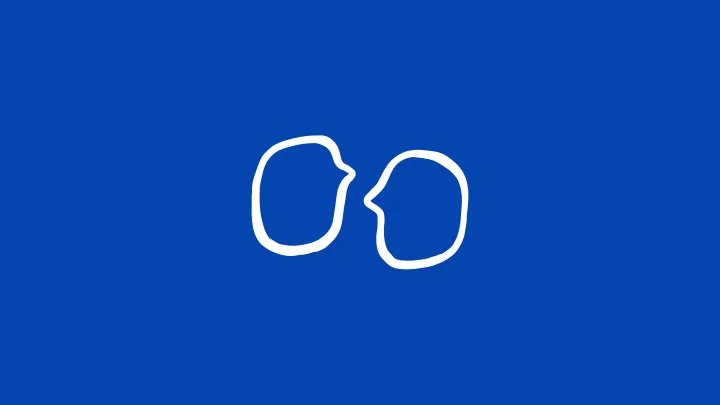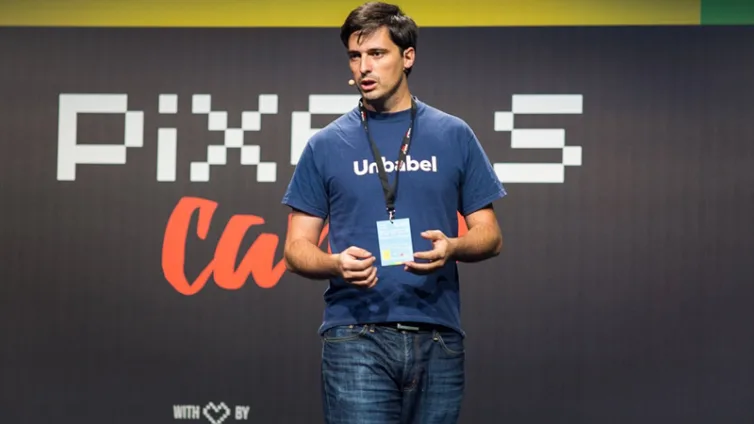I moved to London in 2009. At the start, I hated it. I was broke and the weather was… well, you know. The city was cold, everyone seemed rude and I really struggled to understand a word of that crazy fast London accent.
It was tough. Coming from a small town in northern Spain, I wasn’t used to being a small fish in a huge pond. I soon got a gig as a freelance correspondent for Spanish speaking media outlets. The money wasn’t enough to survive so, almost by accident, I took a job moderating gaming and tech communities.
Gaming communities are one of the hardest to manage and, to be honest, I don’t even like video games. However, I soon realized that I took great satisfaction in helping people connect with others and build relationships online. It wasn’t about the games. It was about the people in those communities. And how important it was for them to have a space to be themselves, and meet other people like them.
Needless to say I eventually decided to stick to the online community world. During the following years, my roles and projects expanded. I became a community mentor and consultant and started helping really exciting brands build their communities and teams from scratch.
I was even starting to enjoy London. But warmer seas were on the horizon.
Typeform calling
In 2019, before the pandemic started, I came across Typeform. They were planning to launch their community, but they were missing a very important piece of the puzzle: a community professional. Back then I was working on numerous community projects simultaneously, but Typeform seemed to be a special place. Their mission, "creating a world of more personal business relationships," quickly resonated with me. And in the summer of 2020, me and my family left London for Barcelona. Hello sunshine.
Starting a community from scratch is a Herculean task, there are countless moving parts and it’s easy to get overwhelmed. Here’s how I approached the Typeform community. It may help you if you're interested in starting your own.
Phase 1: defining your community
When defining your community, the main question your organization needs to be able to answer is: why do we need a community and why is it indispensable for us and our audience?
Lots of companies tend to rush through the definition phase, which is something I definitely don’t recommend. Community can mean different things to different people, so you want to make sure everyone understands why your community exists and what it's supposed to deliver for your audience and for your business. Unless you get this clear, the whole project can quickly derail and move in all sorts of unwanted directions.
At Typeform, we defined community as a collaboration platform. A place where creators can learn how to leverage our products to build more personal relationships with their audiences. Our community is the place to level up your game and connect with other creators facing similar challenges.
At this stage, the main goals we set out for our community were the following:
Connect our creators and enable them to build better typeforms, faster.
Create a public library of conversations, challenges and solutions that anyone can access anywhere and any time.
Establish a closer relationship with our community of creators.
Create content based on the needs of our community.
Showcase the amazing stuff people can do with Typeform.
Learn from our community.
The definitions and goals of a community cannot be agreed alone, everything is a collaborative effort. So before you build your own, spend time talking to as many people as you can in your company to understand all of the above.
I spoke to nearly 70 people at Typeform during this phase and I believe there was at least one stakeholder from each and every company team involved in the launch of our community.
Phase 2: planning the launch of your community
This phase is about writing requirements and making decisions about what you need in order to flip the switch of your community and invite your members.
This phase is full of decisions. You need to choose your community platform, community team, launch strategy and initial engagement plan. Let’s dive in.
Your community platform
Unfortunately you can’t start a community without a platform. These days there are countless options, especially since COVID started. It’s easy to get lost at this point. My advice is to think about all of the initiatives and actions you want to observe in your community. Then, write your requirements based on those. In simple terms, your tech needs to enable what you want your members to do.
Explore other communities for inspiration, and to understand what works, or doesn’t. That's helpful.
At this point, you’ll also want to ask yourself some questions.
Are we going to run many events?
Do we need a knowledge base?
Are we aiming to co-create with members?
Are we planning to post frequent product updates?
Do we need a "question and answer" section?
Is our community accessible via mobile or desktop?
Is our community going to be public or private?
Tip: Always think about what you agreed on in Phase 1, to inform your decision.
Building your team
The chances of successfully launching a community without a dedicated team who understands what this is all about, are extremely slim.
We’re not in the old days anymore where it was really hard to find a community expert. Community, as a role and business concept, has grown and matured really fast in the past few years. More folks are taking an interest in building a community, or helping others building communities.
In terms or resources, here are two main scenarios:
You’re launching a new company and your community at the same time. This is an ideal scenario. When a community starts at the same time as the parent business, it tends to be easier to integrate as everyone is aware of it from the beginning. Here, you’ll need at least one community pro.
Your company has been running for quite some time and you are integrating your community. Here, you may need more than one community pro. This is because it’s much harder to integrate a community to a company that already has processes in place.
Depending on how big your user base is, you may need one senior community pro and one, or several, community coordinators. If you are a global brand with a presence in several markets (and time zones) with different languages, you may need a community rep per region.
Not having a community team is definitely a blocker, so don't skip this step! Also, depending on the type of community you want to build, finding talent with relevant experience is ideal.
Your launch strategy
Your launch strategy should cover the following points: type of launch (e.g., phased out vs big blast), how to attract members to your community, and expectations/readiness for the day you finally open your community to all. Your community driver should own this process entirely.
Before we opened our community to everyone, Typeform invited thousands of our engaged customers to a closed community environment: this was our beta phase, or soft launch. It was really helpful for us, as we didn't want to make assumptions about our community's needs. We reached out to those who had previously shown an interest in an online community, and got them involved in the process.
These are the kinds of things we discussed with our customers during beta: community structure, purpose, design identity, content strategy and ranking names. We also enabled access to Typeformers (Typeform employees), who provided valuable feedback and organic participation.
Our beta phase lasted two months. It was ample time for us to test our community tech and collaborate with our early community on the simple things that make a big difference.
Tip: Make your beta phase as short as you can. You’ll never be 100% ready to launch, but it’s important to open it up sooner rather than later, to get traction.
What you do during beta is directly linked to where you want to be when you open your community to your audience. Here are some objectives we wanted to complete during the phase:
Platform testing: making sure community tech does what it says it will.
Visual identity for the community: colors, logo, icons, images, etc. There’s possibly more than you think here. I was lucky enough to have a brilliant designer working with me throughout the launch period.
Home page structure: hero banner, menus, sections and sub-sections, widgets, etc. Try to keep it simple, which is always hard!
Content initiatives: understand what content adds value to your community. Also have a system in place as to how to share that content.
Launch campaign: email, social media, signposting. You need a plan to get eyes on your community.
Gamification: set up community ranks and badges to reward your members along their engagement journey.
Hire and train a community team: hiring a community pro can take a minimum of 3 months. Six months in the worse case scenario. If you’re training someone who is already in your team, but has little or no experience, I recommend they dig deep into community management and take a few online courses. There are some real good ones these days.
Custom development (front and back end): most out of the box community platforms look dreadful. Also, I wouldn't launch a community without Single Sign On (SSO), which will require a bit of back end integration.
MVP process to answer community questions: what if people start asking lots of questions? This may happen, so make sure you map out your current customer pain points and how to tackle these in an open public discussion. You need to be comfortable talking about uncomfortable topics.
In hindsight, we achieved a lot during our beta phase. We wanted to make sure everything was as good as it could be. My advice, however, is:
“Don't aim for perfection. Otherwise, you'll never launch! ”
The main things you need to get right before launch are:
A smooth and easy registration process.
A clear structure based on purpose and engagement plan.
Fixed bugs or inconsistencies with the platform.
Copy/content adapted for your community to your brand.
A plan to open up the community and invite your customers.
A community team.
A plan to answer questions and support your community within the first month or so.
A content calendar.
Phase 3: bring your audience on board
There's a huge saturation of communities these days, so catching people's attention is hard. It's even harder to make them talk! This is when you need to nail the message to your audience: why is this community indispensable to you? If you can answer this question and reach out to your community in a clear and compelling way, then they will come. Messages like "join the conversation" aren’t nearly enough—join the conversation for what?
We played around with the following options:
Why does our community exist?
To bridge the gap between all Typeform creators (Employees, customers and partners) and unlock the knowledge of our community.
What can you expect?
The Typeform Community is a collective. A centralized place for you to overcome obstacles, find inspiration, share ideas and tips, and collaborate with like-minded creators.
Why should you join?
Our creators will finally have the opportunity to see up close what other people are doing with Typeform. Find quick and honest answers to your burning questions, dive into all things Typeform and beyond, and help inspire others with your ideas too.
The point is, nail your pitch to your community and start off engaging your most active customers—those who are already talking to you in other platforms (support, social, surveys, etc). We used a typeform to gather interest first, and then we kicked off beta with just a hundred customers who were really keen to participate. Beta is more about quality than quantity. But we also sent a few emails to a couple of thousand active customers to get a bit of volume before 'opening the floodgates'.
Opening your community
The best way to approach the launch of a community is as a process, as opposed to a date. There are so many moving parts involved that it's impossible to fit all initiatives into one day, or even a week. We launched on January the 26th and we've approached Q1 as the our 'launch phase'. Below is a high level roadmap of how I’d approach the first year of a community.
In my experience, a community needs a minimum of one year to get well rooted into the parent company. You need time to build your community foundation. Q1 for us was all about securing a successful launch. But how do you know when you've had a successful launch? Here are some signs to look out for:
You have a healthy influx of visits and sign ups. Your goal here will vary depending on your customer base, but you need new people joining your community everyday.
You manage to engage a few pioneers (from the beta phase) and they continue to be actively engaged throughout launch.
Your members are talking! We were aiming for an engagement rate of 30% (users who actively contribute with questions or comments). For us, nearly half actively engage in the community.
Your customers understand the purpose of the community and are behaving in the way you planned. Mind you, there will always be surprises, but hopefully good ones.
Your platform is stable and offers the type of functionality required to enable your purpose.
Your team is settled and has started to build close relationships with community members.
Your company shares regular content and projects with the community, asking for feedback and involvement.
From an engagement point of view, launch is about sharing, and leading by example. Your community will gradually increase participation as it feels more comfortable and trust is established.
I'm proud to say that our launch was a big success, we designed a beautiful community and signed up 3,000 creators in just two months. By the end of Q1 we had almost 1000 conversations started by our community, easier said than done! We are also starting to get testimonials that help us understand the real value this community is offering to our creators:
“Thanks for the community. It helps to learn what is possible with Typeform much faster. Everytime I scroll through the posts, I get new ideas on how I can use Typeform myself more efficiently and create incredible quizzes, tests and feedback forms.”
That’s the real deal. Nobody will ever put it better than your customers. You’ll always get brutal honesty from them—during the good and bad times.
So, what's next? Launching a community is the first step to building a community. After launch, it's time to think about how to scale and grow your community. Also, which community programs and projects make more sense to you and how it is that you’ll ultimately unlock the full potential of those who love your brand the most.
Tip: After launch is out of the way, think about the ultimate goal - your community purpose - and map out the steps you see your community taking before reaching the pinnacle.
Online communities are relationship-building machines
When my parents ask what I do for a living, I tell them that I connect people together on the Internet. "And they pay you for that? Be careful, ok?" That's how they often respond. Online communities were a bit of a weird concept only ten years ago, but they have evolved and accelerated massively in the past couple of years. They are now mainstream.
Since working in communities, I've had many heated debates about the authenticity of personal relationships online versus offline. Not long ago it was considered mad to say that online was as authentic as offline. However, I believe COVID has changed our perception of virtual relationships and blurred the lines between the physical and virtual.
I'll give you an example. Since I started at Typeform I’ve been to the office just once (my Internet at home crashed) and I may have met—in person—just 0.1% of my direct colleagues. Does that mean I haven't built meaningful relationships with my teammates? Hell no. We are a really tight-knit group and I'm really grateful to be able to work with them. The pandemic has made us stronger and the support I had to launch this community is truly remarkable.
Virtual relationships won't replace face-to-face interactions, that's not the point. We need to meet people in person, we need real hugs! However, online relationships can be genuine too. And they're here to stay.
The Internet is a wild place where anything is possible, good and bad. We want our community to be a force for good, a space where we can harness the wild, positive creativity that powers us here everyday at Typeform. So come join our community. It's always open. Let's create a world of more personal business (virtual) relationships together.






